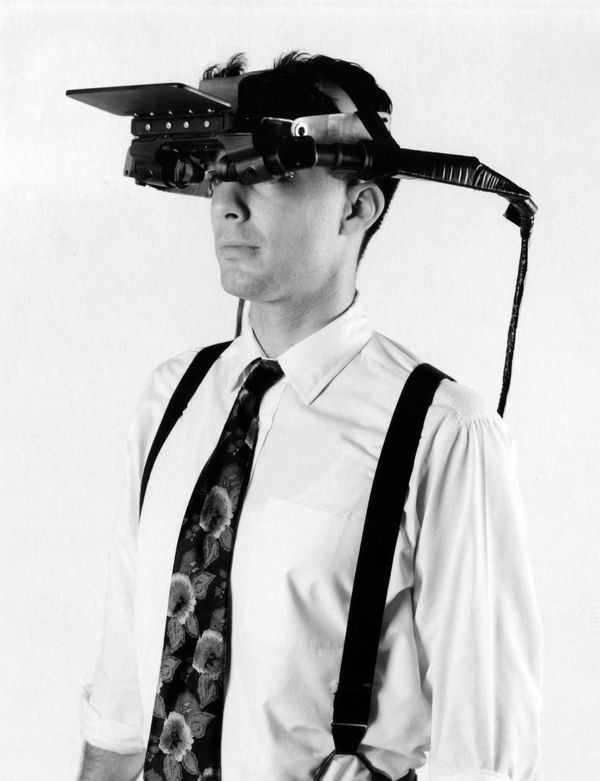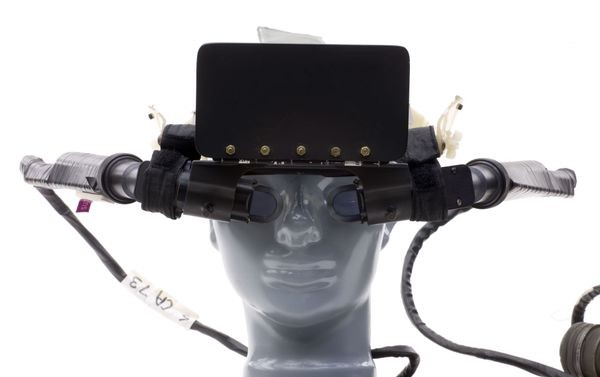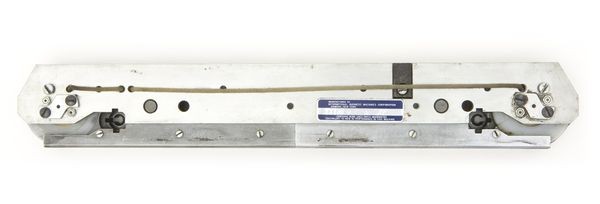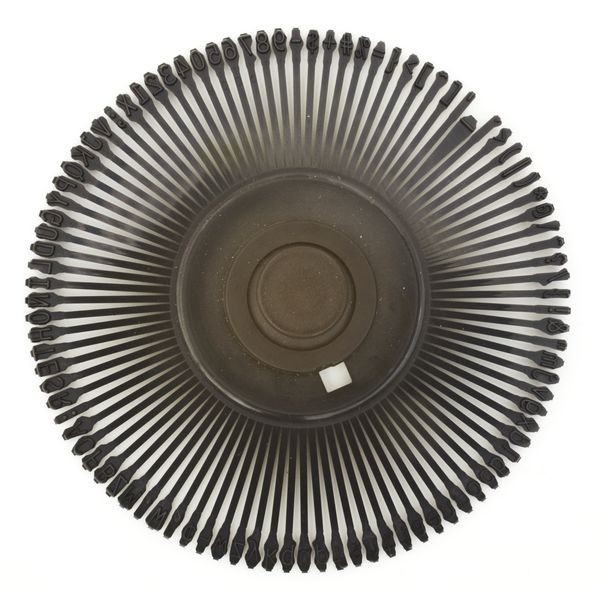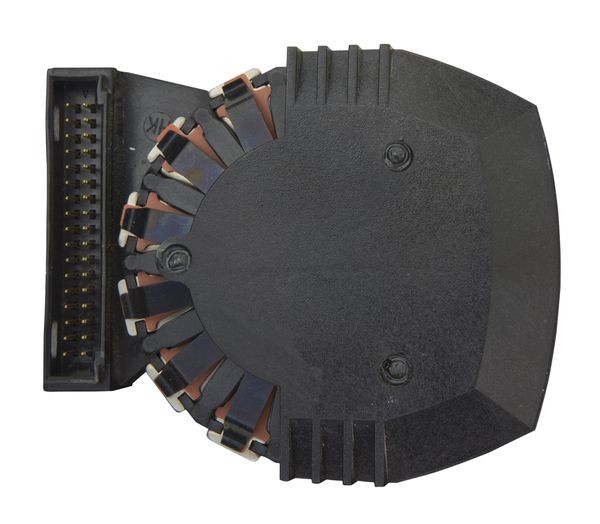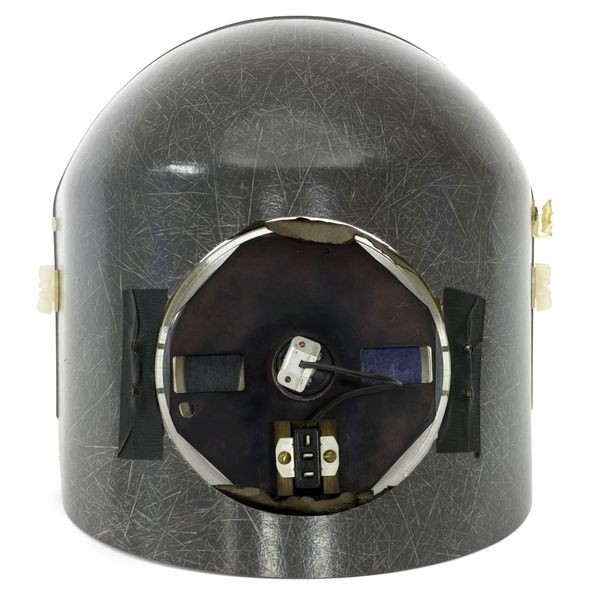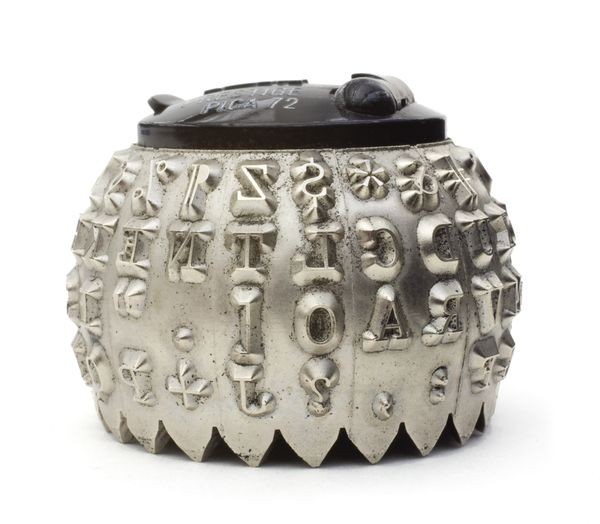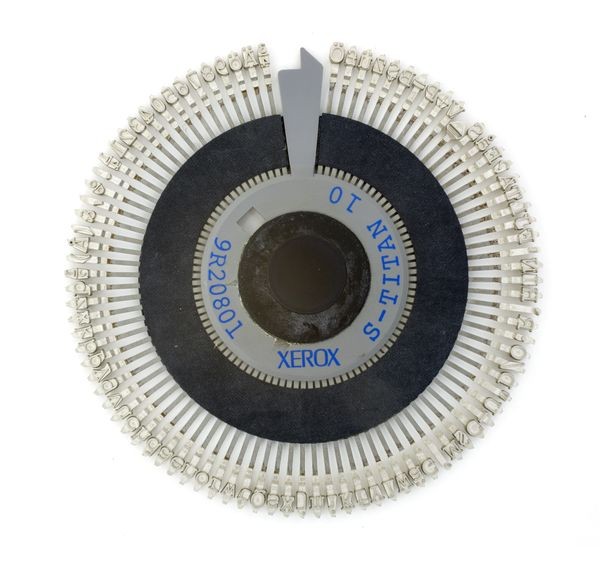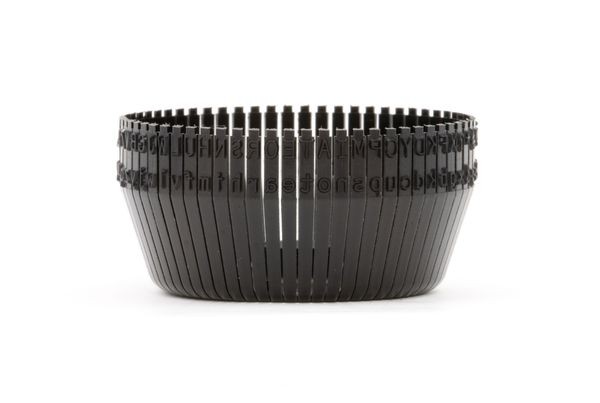The Diversity of Output Devices
The Sword of Damocles: Early head-mounted display
Harvard computer science professor Ivan Sutherland created this virtual reality head-mounted display, jokingly referred to as “The Sword of Damocles” because of the large overhead beam required to support its weight. His student Bob Sproull assisted with the design. An early application showed a three-dimensional wire-frame virtual room that users like this man could explore by moving their heads.
Output Cabinet of Curiosities
Whether with a realtime display or a permanent printed record, many computers need to communicate visually with humans to be useful. Hundreds of mostly clever -- but sometimes silly -- devices have been invented to do that.
The cycle of innovation and competition is fierce. Even popular mainstays like the daisy-wheel printer quickly become museum pieces as they are displaced by the next great idea.
SegaScope 3-D Glasses for the Sega Master System
Liquid-crystal lenses for the right and left eyes rapidly switched between transparent and opaque, while a video screen displayed synchronized alternating images. This created the illusion of 3-dimensional vision.
View Artifact DetailIvan Sutherland’s experimental 3-D display
This ungainly device was probably the first head-mounted stereoscopic display. It was called the Sword of Damocles, because it was suspended from the ceiling to reduce the weight pressing on the wearer’s head.
View Artifact DetailPrint chain
This print chain is from the workhorse 600 line-per-minute 1403 printer, released with IBM’s 1401 computer. Hammers pushed paper and inked ribbon onto characters rushing by on the chain. Jitter was horizontal, to which the eye is not sensitive.
View Artifact Detail1140 Variplotter
Accurate, reliable X-Y plotters predate computers, making them obvious choices for early graphical output devices once digital-to-analog converters were developed.
View Artifact DetailDaisy-wheel print head, black
David Lee’s 1969 daisy-wheel had a sharply formed character on each “petal.” Carbon-film ribbons produced superb printing. A character could be made bold by printing it several times in slightly different positions.
View Artifact DetailDot matrix print head
Solenoid-driven pins create a line of dots on the paper. Several rows of dots form characters. Durable and inexpensive, dot-matrix printers remain popular for “carbon copies.”
View Artifact DetailLine-printer hammer unit
This line-printer hammer is from LARC, an early supercomputer at the Lawrence Radiation Laboratory in Livermore, California.
View Artifact DetailColor viewing helmet (prototype)
This research prototype video display was used with the “Space Pen” in early virtual reality research at Harvard.
View Artifact DetailDrum-type line-printer print head
Hammers pushed paper and inked ribbon onto the appropriate characters as they came around on the constantly rotating drum. Drum printers produced 600 or more lines per minute, but vertical alignment, to which the eye is sensitive, was sometimes uneven.
View Artifact DetailSelectric "Golf Ball" print head
The Selectric’s iconic “golf ball” print head, with carbon-film ribbon, produced excellent text. Interchangeable balls offered many character sets — a feature first offered in the 1893 Blickensderfer Typewriter!
View Artifact DetailDaisy-wheel print head, silver
Daisy-wheel printers dominated high-quality, high-speed office printing in the 1970s and 1980s, until low-cost laser printers arrived. Unlike chain and drum printers, a wheel moved the desired character into position, then paused while the hammer fired.
View Artifact DetailThimble-printing print head
The NEC Spinwriter used a “thimble-style” variation of the daisy-wheel concept. Changing fonts required changing the thimble.
View Artifact DetailHP DeskJet 500 inkjet print head
In 1984, the first disposable, mass-market inkjet print heads had 12 nozzles. By 2010 print heads had hundreds of nozzles and produced droplets hundreds of times smaller.
View Artifact Detail